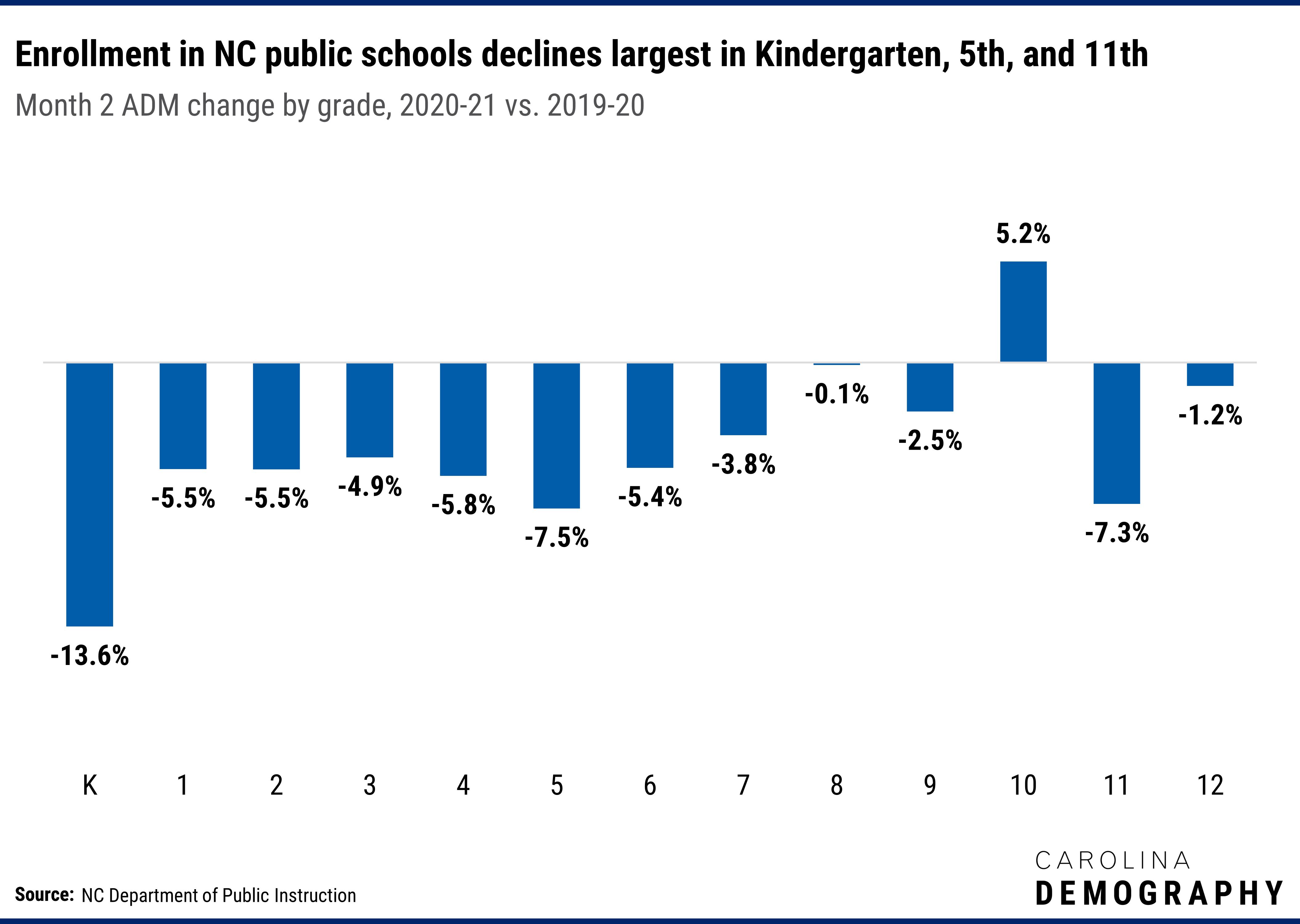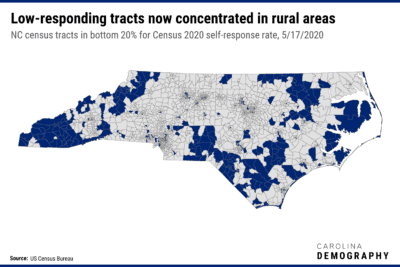Across the country, fewer students are showing up in traditional public schools because of the ongoing COVID-19 pandemic. We have looked at attendance data from the North Carolina Department of Public Instruction to understand how declines in enrollment vary across the state and which grades are impacted.
What is Average Daily Membership?
Average Daily Membership (ADM) is considered the most accurate metric for how many students are in a school. Schools are funded based on their forecasted ADM. For this year, the North Carolina General Assembly passed a bill that holds districts harmless for ADM declines.
How much is school attendance down?
Statewide, nearly 63,000 fewer students were attending public schools in Month 2 of 2020-21 compared to 2019-20, a loss of -4.4%.

Public school enrollments had been slowly declining since 2015-16, reflecting two factors:
- Growing enrollments in charter schools
- Smaller kindergarten classes because of lower birth rates during the Great Recession.
The decline in ADM this past fall was five times larger than the largest decline previously observed (between 2017-18 and 2018-19).
Where is school attendance down?
Statewide, only two public school systems reported higher Month 2 ADM in 2020-21 over 2019-20:
- Mount Airy Schools: 41 students or 2.6%
- Elkin City Schools: 18 or 1.5%
All other school districts had ADM declines of at least one percent or greater, with Rowan-Salisbury Schools and Weldon City Schools reporting ADM losses of nearly eighteen percent.
The largest ADM decline was in Charlotte-Mecklenburg Schools (-8,055), followed by Wake County Schools (-4,234), Rowan-Salisbury Schools (-3,292), Winston-Salem/Forsyth County Schools (-3,246), and Guilford County Schools (-2,887).
Which grades are down?
Statewide enrollments are down for all grade levels except for grade 10. Enrollment declines were most heavily concentrated in kindergarten (14,282 fewer students or -13.6%), followed by 5th grade (8,428 fewer students or -7.5%) and 11th grade (7,859 fewer students or -7.3%).

Eighth grade enrollments marked the smallest decline (140 fewer students or -0.1%) while grade 10 enrollments increased by 5,580 or 5.2%. This increase is in part because the ninth grade class in 2019-20 was much larger than the 10th grade class in that year (123K vs. 107K).
Where are the missing school children?
Statewide, there were 63,000 fewer students enrolled in public schools in fall 2020 compared to the prior year. While charter school enrollments increased by 8,088 over this period, this leaves more than 50,000 students missing. Some of these students may be in home schools, as fears of the coronavirus combined with the challenges of navigating virtual schooling led some families to choose home schooling as the “easier” option. Other parents may be prioritizing schooling opportunities that offer in-person education by sending their children to private schools. And some students are missing from formal education entirely. We will not know the magnitude of either home school or private school shifts until July 2021, when the 2020-21 data are released from the Division of Non-Public Education at the NC Department of Administration.
Editor’s note: This piece was first published by Carolina Demography. It has been published with the author’s permission.
Recommended reading



